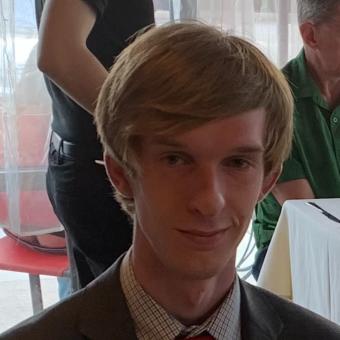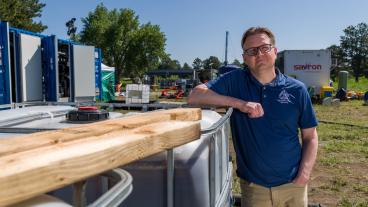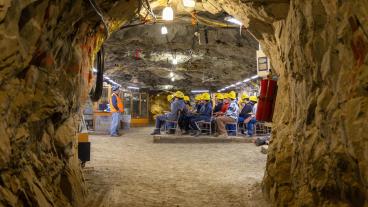Mines grad student to conduct DOE research at Lawrence Livermore National Laboratory
Physics student Drew Marino will be working with world’s top expert in Superconducting Tunnel Junction detectors

A Colorado School of Mines graduate student has been selected for the U.S. Department of Energy’s Office of Science Graduate Student Research (SCGSR) program.
Drew Marino, a PhD student in physics, will be hosted at Lawrence Livermore National Laboratory in California, where he will work with staff scientist Stephan Friedrich, the world’s top expert in Superconducting Tunnel Junction (STJ) detectors.
“The goal is to get as much experience operating these STJ detectors as possible,” Marino said.
A member of the Electroweak Interactions Group at Mines, Marino’s research is focused on the Superconducting Array for Low Energy Radiation (SALER), a new experiment that uses STJ detectors at low temperature to measure low-energy nuclear recoil following radioactive decay from rare isotopes. For his dissertation, he will be commissioning the hardware – delivery to first light – and doing some theoretical calculations.
His time at Lawrence Livermore will help resolve a long-standing question they’ve had on SALER, as well as another experiment he’s working on with his PhD advisor, Kyle Leach, associate professor of physics: the Beryllium Electron capture in Superconducting Tunnel junctions (BeEST).
“We use a laser for calibration, which allows us to measure the spacing between single-photon peaks in the resulting spectrum very precisely. However, that's only the spacing – we don't have an absolute number on the energy since we can't guarantee that there's not any offset resulting from systematically missing the first or first several photons,” Marino said. “I'll be comparing the spectrum from the calibration photons to that resulting from a set of well-known energies, the x-ray fluorescence lines from various materials. Since these x-rays are also photons, there shouldn't be any weird materials effects due to the response of the detectors to photons vs. nuclei, giving an apples-to-apples comparison.”
The DOE selected 86 graduate students, representing 31 states and Puerto Rico, for the SCGSR program. Through world-class training and access to state-of-the-art facilities and resources at DOE national laboratories, SCGSR prepares graduate students to enter jobs of critical importance to the DOE mission.




